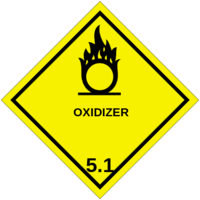-
Oklahoma University gets DHS research grant
The University of Oklahoma Health Sciences Center (OUHSC) was awarded a $490,000 grant from DHS for a 2-year study of how law enforcement officers utilize awareness of their surroundings to collect and then analyze intelligence related to potential terrorist threats
-
-
LAPD shows the way in local counterror efforts

Commander Joan T. McNamara, who heads the LAPD Counter-Terrorism and Criminal Intelligence Bureau, has devised a method which is considered so inexpensive, easily implemented, and innovative that federal authorities are considering making it a national model for local law enforcement intelligence gathering
-
-
Supreme Court hears arguments on Arizona immigration law
The U.S. Supreme Court yesterday heard arguments about the tough Arizona immigration law, known as SB107; the case highlights a fundamental disagreements over the precise balance of power between the states and the national government; the judges appeared skeptical of the administration’s arguments; the Arizona case may occasion a redrawing by the Supreme Court of established boundaries between the federal government and the states on immigration enforcement
-
-
New micro helicopters for search and rescue missions
New micro helicopters have a diameter of about fifty centimeters, weigh only 1,500 grams; they do not rquire GPS or remote control to navigate; they are designed to maneuver in tight or even enclosed spaces, and to detect and fly around any obstacle; possible uses could include protection or rescue missions, and they are ideal for flying over disaster areas and giving a picture of the situation from the air or locating victims
-
-
Harris deploys public safety communications system in Virginia
Harris Corporation has received a $10 million contract from Pittsylvania County, Virginia, to deploy a public safety digital communications system based on P25 Phase 2 standards
-
-
1962 disaster leads to stricter hazmat transportation regulations

Federal transportation law requires all vehicles carrying hazardous materials to display information placards, diamond-shaped, color-coded signs with numbers and symbols posted at various points on the truck; the law is the result of a 1962 Connecticut accident, in which four fire fighters died because they were not aware of the hazardous material a truck, which was on fire, was carrying
-
-
Review of HTV-2 second test flight concluded

The goal of the Pentagon’s Conventional Prompt Global Strike initiatives is for the U.S. military to have the capability to reach anywhere in the world in less than one hour; a key element of the project is the is Hypersonic Technology Vehicle (HTV-2), which can reach speeds up to twenty times the speed of sound; during an 11 August 2011 flight test, the HTV-2 developed what DARPA describes as “flight anomalies,” which an engineering review board has examined
-
-
Wisconsin county has a new LMR system
In Rock County, Wisconsin, firefighters have been required manually to change radio channels as they moved from North to South because of two different frequencies in the region; Raytheon is helping to combine three disparate communications systems in the country into one; the result will be more efficient – and interoperable – first response communication system
-
-
Efficiency of multi-hop wireless networks boosted
Multi-hop wireless networks can provide data access for large and unconventional spaces, but they have long faced significant limits on the amount of data they can transmit; now researchers have developed a more efficient data transmission approach that can boost the amount of data the networks can transmit by 20 to 80 percent
-
-
San Francisco earthquake planners developing pet-disaster response

San Francisco is preparing for the Big One in more ways than one: the latest addition to the city’s disaster preparedness plans is a legion of pet disaster responders, trained by city officials to rescue pet dogs, cats, rodents, birds, and reptiles in the event of a disaster, and transport them to one of 125 temporary shelters
-
-
Baltimore police to videotape confessions
More and more police departments are videotaping suspects’ confessions, and presenting these recordings as evidence during legal proceedings; the cost of recording equipment has declined, but all these recordings must be catalogued and stored, and must be accessible upon request, adding to the total cost of system ownership and operation
-
-
New sensor to enable military operations in GPS-denied areas
Many U.S. military systems, such as missiles, rely on the Global Positioning System (GPS) to provide accurate position, orientation, and time information while in flight; a DARPA project seeks an atomic inertial sensor to measure orientation in GPS-denied environments
-
-
More efficient bioterrorism response plan
In the event of a bioterror attack on a building (think: the 2011 anthrax attack on the offices of two Democratic Senators, Tom Daschle of South Dakota and Patrick Leahy of Vermont), the current approach to decontamination is to clean up the building until no pathogens can be detected; researchers suggest, however, that whether or not pathogens are found depends greatly upon how extensively the buildings are tested
-
-
Identifying ammunition, gun used to commit a crime
New, Raman spectroscopy-based gun-shot residue (GSR) analysis technique would make it possible for forensic investigators to match minute amounts of GSR to the exact type of ammunition, and the caliber of the gun, used to commit a crime
-
-
The technology behind the Zimmerman arrest video
Van Nuys, California-based Forensic Protection was asked by ABC News to clarify the grainy video showing George Zimmerman being brought to the Sanford Police Department headquarters; the video clarification work was so good, other media outlets used it (even if they attributed the technical work to ABC News); Forensic Protection insists that its client not disclose what it is that they are seeking or looking for in the clarification process: this allows the results of the clarification to stand on their merit
-
More headlines
The long view
Why Ukraine’s AI Drones Aren’t a Breakthrough Yet
Machine vision, a form of AI, allows drones to identify and strike targets autonomously. The drones can’t be jammed, and they don’t need continuous monitoring by operators. Despite early hopes, the technology has not yet become a game-changing feature of Ukraine’s battlefield drones. But its time will come.
